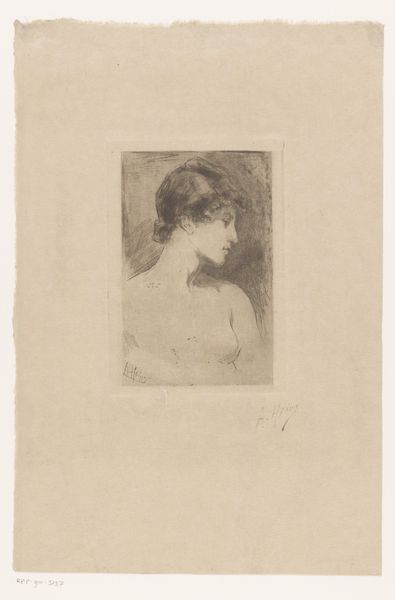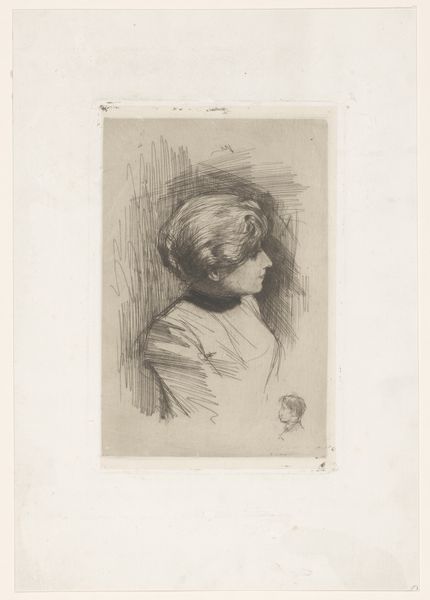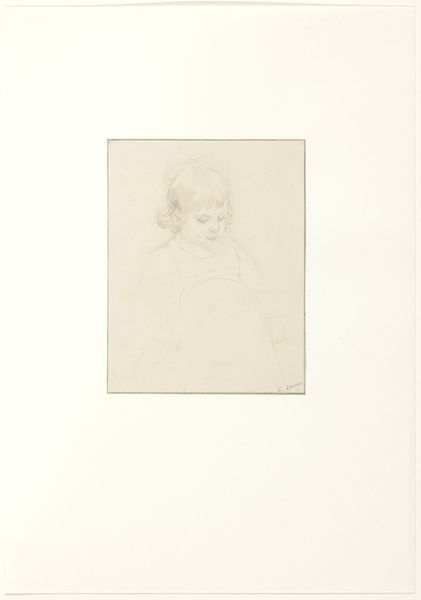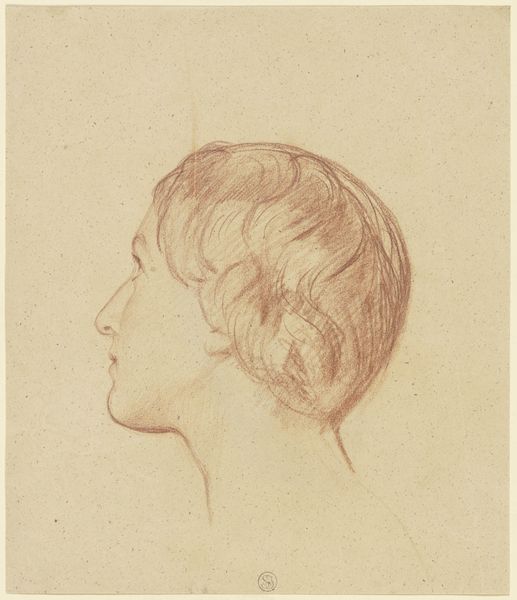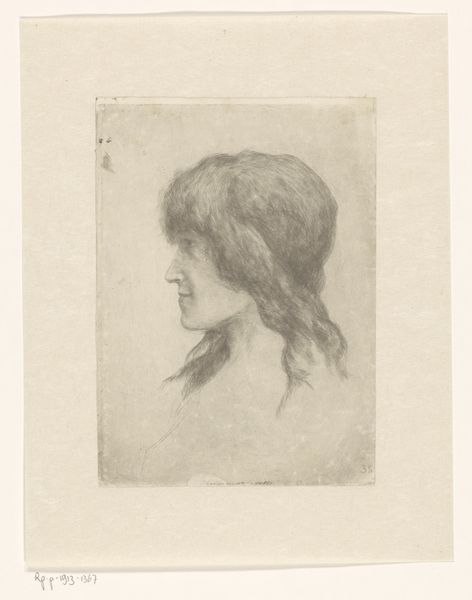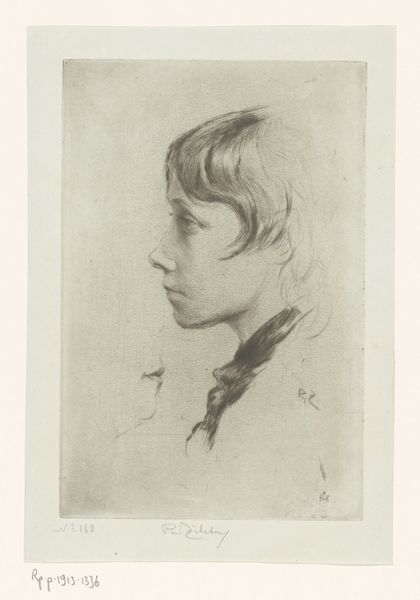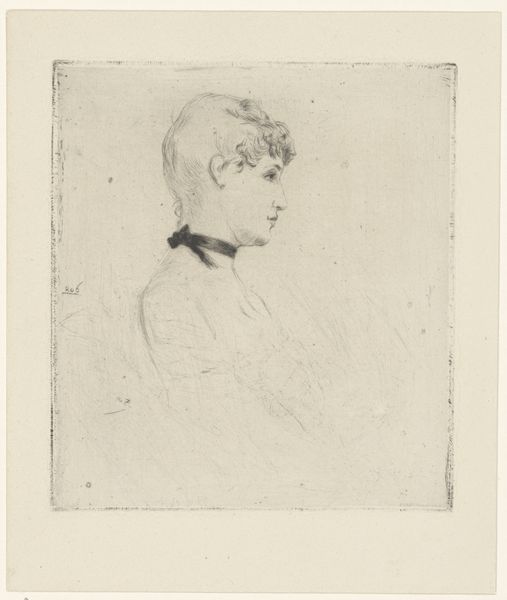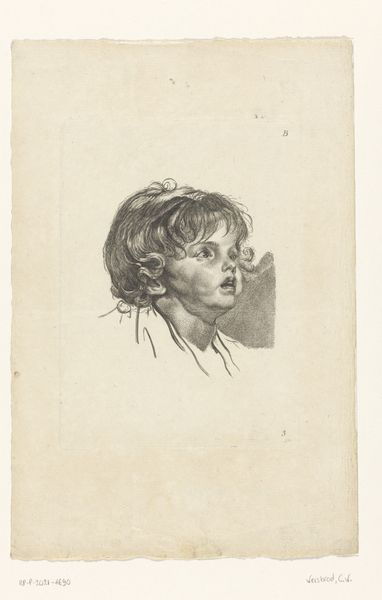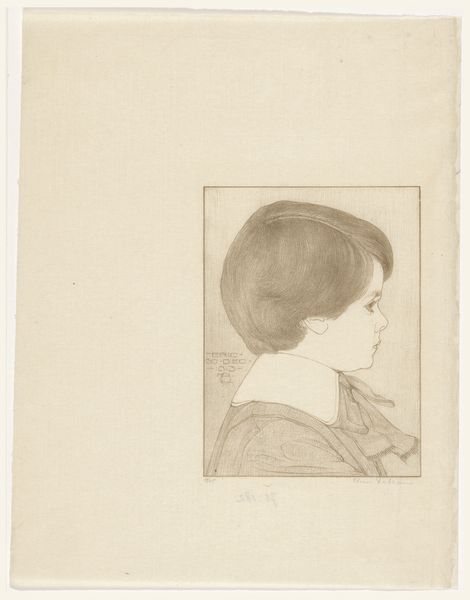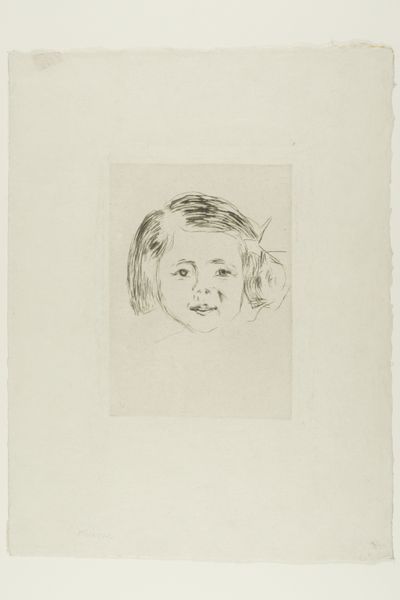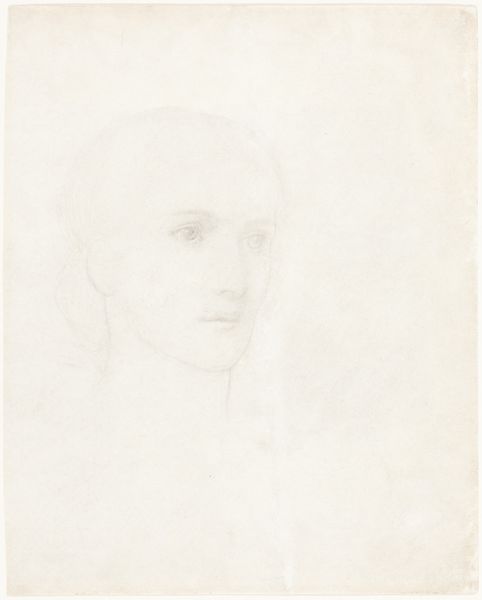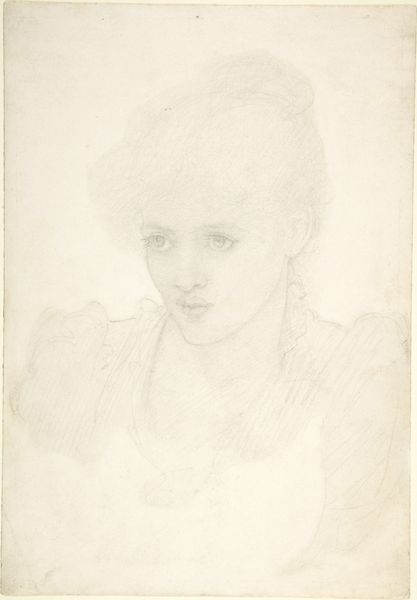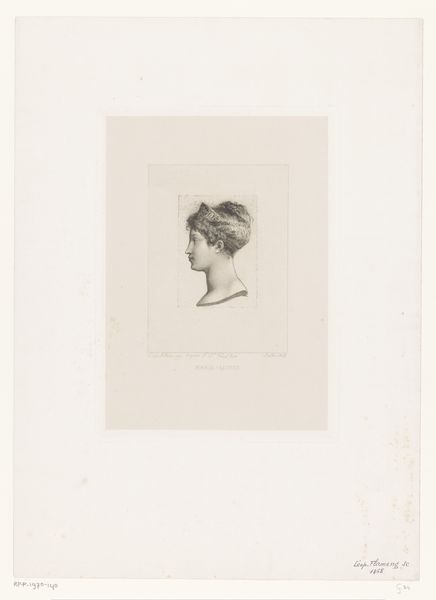
Gezicht van een bloemenverkoopster, en profil naar rechts c. 1870 - 1918
0:00
0:00
Dimensions: height 159 mm, width 97 mm
Copyright: Rijks Museum: Open Domain
Editor: This drawing, "Gezicht van een bloemenverkoopster, en profil naar rechts," by Philip Zilcken, made with pencil, somewhere between 1870 and 1918… It feels so fragile. It’s just a delicate pencil sketch, and the woman seems kind of wistful. How do you interpret this work? Curator: I see a reflection of the evolving role of women in the late 19th century. The subject, a flower seller, occupies a space between the domestic and the public. What does it mean to portray a woman working in this profession during this era, caught between tradition and modernity? Consider the Impressionistic style: the sketchiness, the emphasis on capturing a fleeting moment. Does it hint at the transient nature of her existence or perhaps the undervalued labor of women? Editor: I didn’t really think about her profession as representing her place in society…I was just looking at her face! I guess, in a way, portraying her as an individual worker gives her agency that maybe she didn't have. Curator: Exactly! And note how Zilcken chose a profile view. What does it conceal? What does it reveal? Are we meant to focus on her anonymity, or does this perspective allow us to contemplate the social structures shaping her life and choices? Also, consider the art world itself at the time: was Zilcken's portrayal offering social commentary or simply a depiction of everyday life? Editor: That's fascinating, because it makes me think about the artist’s choices differently. The drawing isn’t *just* a drawing; it’s a statement about a specific time. Curator: Precisely. Art allows us to interrogate the power dynamics embedded within historical representations and connect them to contemporary conversations about gender, labor, and social justice. It's an ongoing dialogue. Editor: This really broadened my understanding. Thanks for helping me to see it in this way! Curator: My pleasure! Looking at art as a lens for social commentary gives the piece a whole new meaning, doesn't it?
Comments
No comments
Be the first to comment and join the conversation on the ultimate creative platform.
